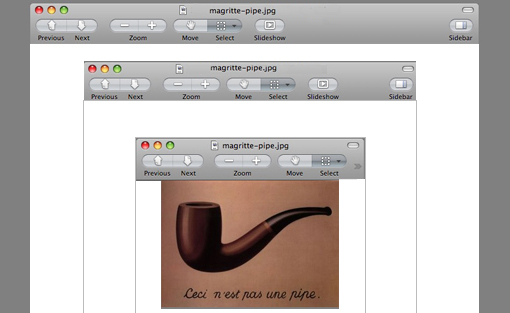But is it art?
Posted on December 11, 2011 | posted by:This fall I went to Minneapolis to do an exhibition and artist talk at a local college. These events had been scheduled for months prior to my coming to school. During the artist talk the subject of what I’m currently doing came up. I told them about the Transdisciplinary Design program and got a lot of questions as to how our program pertains to my art and why I chose to take a “divergent” path from the more traditional art career trajectory. The big question: “Are you still making art?” was asked in many different ways. I stumbled a bit because I wasn’t prepared to answer this question. I talked about how I think artists can bring a needed voice to the dialog and can have an essential role in helping to create different solutions. I emphasized the idea that I don’t believe art and the process of art must culminate in a gallery. I told them that I had realized that my end goal was changing and that I decided to take this Transdisciplinary design path to challenge myself with new ways of seeing and thinking. Then someone asked “so does that mean your still making art?”
Hmmm.
The question as to if I’m still making art has been in my thoughts throughout this first semester. Though, the question is evolving into more interesting questions for myself: What can this art be? What can this design be? And how do I develop a language that incorporates the processes and concerns of both art and design?
Bruce Nussbaum, a writer, journalist, and teacher at Parsons came to our Transdisciplinary Design seminar. He very generously shared with our class an article he is working on about framing. He writes:
FRAMING is the focal lens of CQ. It is the least understood of the five creative competencies and the one with the most potential. Framing is a creative competence that helps us understand what gives meaning to everyday life. It helps us design new social experiences and material things that amplify that meaningfulness. In a life that is now hyper-connected, hyper-global, hyper- local, hyper-dynamic and hyper- material, all at the same time. Framing is a way to navigate and create through vast layers of complexity.
My question as to how art and design can be interwoven to create platforms for new possibilities must surely start with framing. I like the prefix hyper-. I interpret the hyper-dynamic he refers to as the emergence of transdisciplinary sensibilities across a broad spectrum of fields. There is a growing realization that one lens on a problem may get to a solution but that a larger frame, one able to utilize many kinds of lenses could get to an even better one.
The methodologies of both art and design are entrenched in their own expectations. But at the same time, both are in a state of flux; asking some hard questions as to what they each could be. Though I see this more explicitly happening within design, perhaps because these types of propositional questions are more inherent or sub-conscious in the art process. The pervasive question of “Is it art?” that stubbornly makes the rounds, especially in the public view, has kept artists on their toes and continually pushing that boundary. I’m painting with a broad brush here (no pun intended), the recalcitrant nuances of art are well established, often the only way to explore boundaries in art is through irony. That said, it may be an easier model; art that blurs the line into design. Though I’m not satisfied that that would actually accomplish what I’d like to do. The concept of wicked problems helps to inform my development; only through making can I really tease out a solution that will help to define what the boundary/problem/question really is. Framing gives us the means in which to tease out a solution.
In his article, Nussbaum defines three types of frames: narrative, engagement, and propositional framing.
There is Narrative Framing, which is how we interpret the world; Engagement Framing, how we interact with each other; and Propositional Framing, how we construct future “what if” scenarios.
I’m drawn to the propositional framing in regards to how I begin to answer my question concerning the amalgamation of art and design.
Propositional Framing moves to the level of framing entirely new possible options and generating them. Propositional Framing is a way of deliberately instigating a creative moment and generating a new way of seeing and doing things.
Though I see how all three of these frames should work in accordance. By utilizing the different types of framing as a tool during a process we will gain the perspective needed. Just like one lens can produce myopic vision, using only one frame could perhaps create a limited view to the possible solutions.
Framing is a way to navigate and create through vast layers of complexity.
I’ll write that line down and keep it in my pocket for easy access. Just as a reminder that when I’m in doubt I can go back to the way I’m framing the issue, perhaps it has slipped from its nail.
